Westone Thunder IA
There have been at least 5 versions of the Thunder IA - thanks to forum members Tele, Adam and Chutzpah for help in identifying the differencesVersion 1 (1981-2)
As shown in the 1981 catalogue
- Body - laminated Ash, Maple and Walnut
- Neck - 3-ply Maple,
- Rosewood fingerboard. 24.75 inch scale, 22 frets
- 2 Magnet-F450 pickups, 3 way selector switch Controls - coil tap, phase, active on/off switches.
- Master volume, master tone, equalizer volume (Active gain) As with later models, the active tone control gives plus or minus 25db off the centre (Zero) position, unlike later models the gain is variable (Up to 13db boost)
- Brass nut knobs and bridge - the bridge saddles are barrel shaped, like the saddles on the Thunder basses.
- This version does not have through-body stringing.
- Script logo on the headstock
- The upper strap button is fitted to the outside of the top horn.
(Pics courtesy of Ebay member boppthebutler)
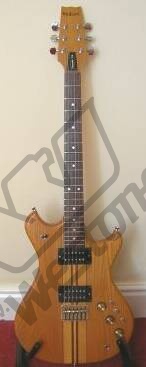
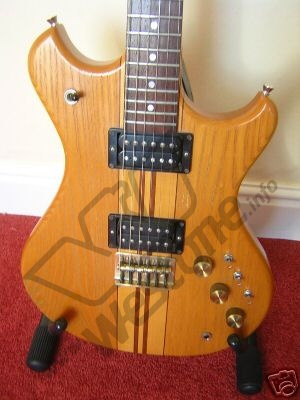
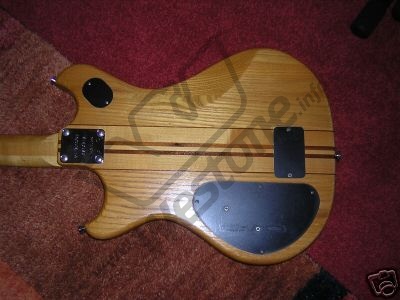
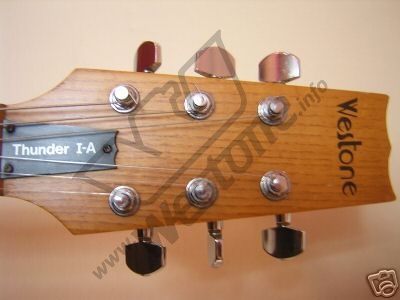
The extra strap button is not original, this guitar was played for a while by a left-handed player
Version 2 (1982-3)
As shown in the 1982/3 catalogue.
- Body/neck wood specs as above,
- Westone script logo on the headstock, plain brass knobs.
- Different bridge with through-body stringing.
- 2 HF450 pickups
- Different active circuit - controls are master volume, passive tone, equalizer tone. This circuit has the same tonal control range as the earlier one but the gain is not adjustable. (Though as with the Thunder IIA the catalogue specs may be wrong - some early 1983 models still had the original adjustable gain active circuit)
- Available in Light Oak, Ash Black and Sunset Red (Red and black finishes had a natural centre stripe)
Version 3 (1983-5)
Shown in the 1983 catalogue. As version 2, except for -
- Headstock features the W 'bird' logo,
- the active tone knob has B-O-T (Bass, O, Treble) etched on it the same as some PEQ knobs
- 2 Hammer I pickups
- The upper strap button is fitted to the inside of the top horn.
- Available in Light Oak, Apple Red or Black. Models with the solid red or black finishes had solid Maple bodies
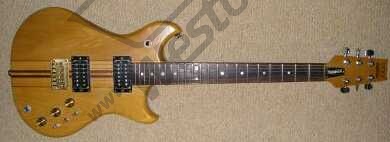
Version 4 (1985?)
I've tentatively dated this one to 1985 as it seems to fall between the versions above and below. There are several changes from the previous model.
- The coil tap and phase switches are push/pull switches, and the bridge and string retainer are steel not brass.
- The nut is graphite (Common on Westones from 1984 on),
- the knobs are the Switchmaster models and the mounting holes on the back plate for mounting the active circuit PCB have moved, presumably because of the extra height in the control cavity that the push/pull pots needed.
I can't date this one accurately as it's one of the very few Westone I've ever seen with no serial number.
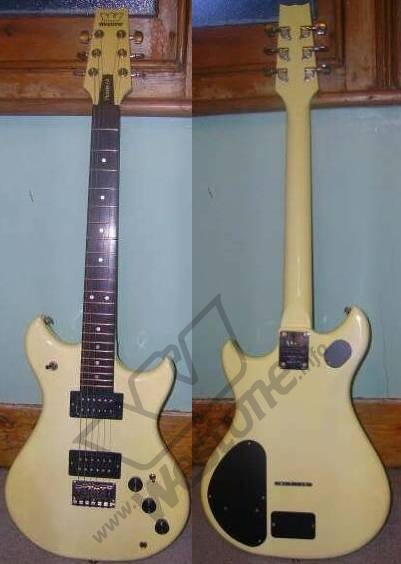
Version 5 (1985 or 86 onwards)
This 1986 Thunder IA has
- different pickups (With the Westone logo) to earlier models
- The coil tap and phase switches are pull switches on the vol and tone pots.
- The pickup selector is in a different position and it has a different headstock logo and steel bridge and saddles.
- 2 humbuckers,
- 3 way switch, passive/active coil tap and phase switches, volume, active and passive tone controls.
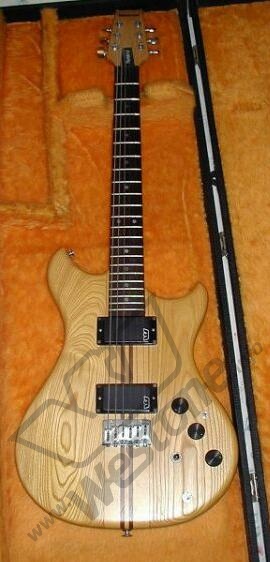
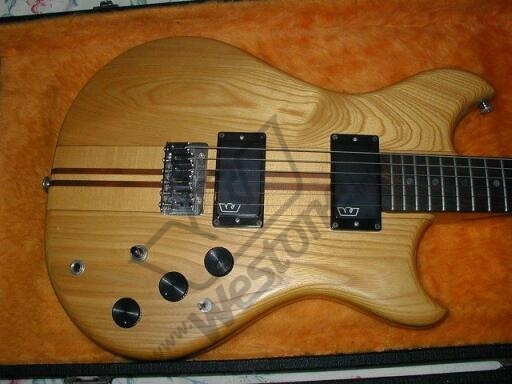
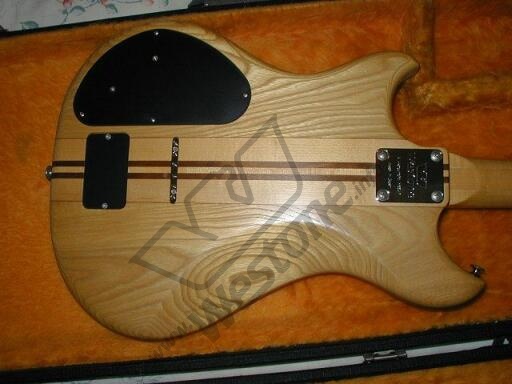
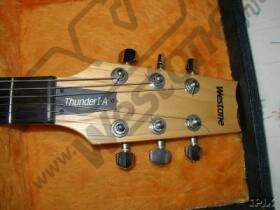
Also available in black
Thanks to Steven Heddle for this picture (The knobs on this guitar are not original - this guitar dates from May 1986 and the original knobs were brass)
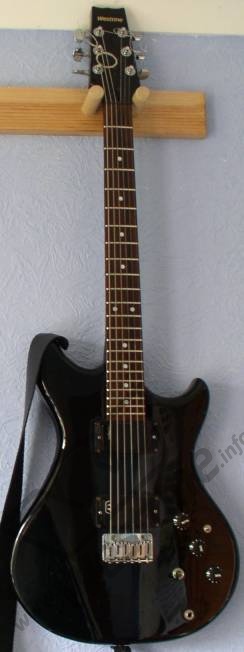
To challenge the point made above about 1986 Thunder 1As originally coming with brass knobs, I have the following image from Eduardo Allende in an email in April 2012:
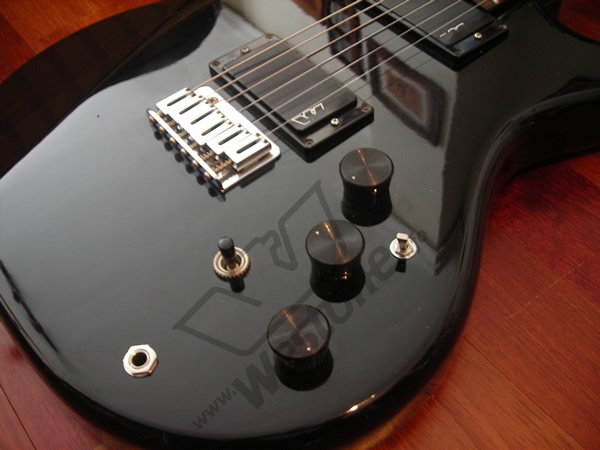
Eduardo states: "I own a Black Westone Thunder IA. I bought it new in December 1986 in Spain (it's a May 1986 model, serial nº 6050149). I've seen in the Thunder IA page that the 1986 black models had brass knobs. Well, at least one of them had not. Mine had (and still has) black ones, as you can see in the attached picture with the original knobs."
I am awaiting a response from Eduardo on the material that the knobs are manufactured from. To my eyes they look metallic (rather than the plastic 'Fender Strat' style ones used in the image above Eduardo's), so they could still be brass, but then coloured black...
Production seems to have ceased around 1987/1988 (Does not feature in the 1988 UK pricelist, but does appear in shop pricelists from magazines in late 1987)


